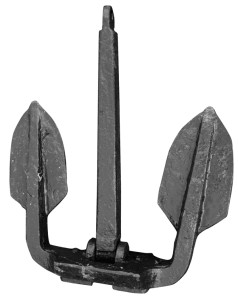 I have been spending a lot of time with Hebrews 6.13-20 lately. The more I learn about the book of Hebrews the more I am intrigued by it. The writer crafts the words on the page in an intriguing and provocative way. A way that calls for us to respond in a tangible way ——- the way of hope.
I have been spending a lot of time with Hebrews 6.13-20 lately. The more I learn about the book of Hebrews the more I am intrigued by it. The writer crafts the words on the page in an intriguing and provocative way. A way that calls for us to respond in a tangible way ——- the way of hope.
In v15 we see that Abraham responds with patient endurance based on God’s promise and oath to him. In the midst of that patient endurance he obtains the promise —– the promise that was embodied in a son. The two unchangeable things are God’s promise and God’s oath. In v18 we can then find our refuge in those two unchangeable things. For in refuge we can seize the hope —— the hope that is based on God’s promise and God’s oath to us. A promise that the Lord will bless us —— so that we then can live lives that are a blessing to the world. A blessing that embodies hope in real and tangible ways.
In referring to those who have taken refuge, the commentator John Calvin writes: “By these words he intimates that we do not truly trust in God except when we forsake every other protection and flee for refuge to his sure promise, and feel assured that it is our only safe asylum.” In this refuge we then find hope from the cares of this world. But it is not just a hope that is future oriented, but instead it is a hope that is found in the now. For this hope denotes a firmness, something that we can hold in our hands.
Continuing to v19 we find the image of the anchor. In this verse we see that the anchor is useful. Sometimes it is useful as a tool, and sometimes it is useful because it gives us hope
just by being on the boat. The anchor gives us hope because we know if the seas get rough, we can drop the anchor to give us firmness in the midst of the storm. John Calvin continues to comment on this group of verses by saying: “As long as we sojourn in this world, we stand not on firm ground, but are tossed here and there as it were in the midst of the sea, and that indeed very turbulent; for Satan is incessantly stirring up innumerable storms, which would immediately upset and sink our vessel, were we not to cast our anchor fast in the deep. For nowhere a haven appears to our eyes, but wherever we look water alone is in view; yea, waves also arise and threaten us; but as the anchor is cast through the waters into a dark and unseen place, and while it lies hid there, keeps the vessel beaten by the waves from being overwhelmed; so must our hope be fixed on the invisible God.”
The anchor is sure and steadfast, safe and firm. From the anchor is a cable or chain that comes and links the boat to the anchor. That chain is to be God’s people —— that have committed to be linked together by the very blood of the lamb. For the chain links to the anchor —— which is Christ. And Jesus has entered into the heavenlies, the inner shrine, as our great high priest ——- and now his followers are linked to him while also linked to the world. In this cable we then embody hope —— for we are to no longer live for our own best interest —— but instead live our lives for the common good. This is a life of self-emptying and self-abandonment —— and in that we embody hope.
We have been impacted by this Jesus and now we are to be trained to be ambassadors of this good news. Ambassadors that proclaim a hope that is bigger than our circumstances and situations. For in that embodied hope we then can find who we are to be —– one who imitates the ways of Christ in this world.
